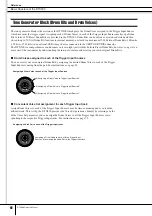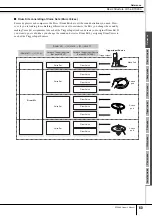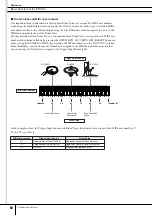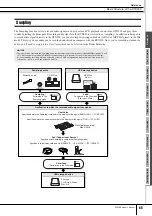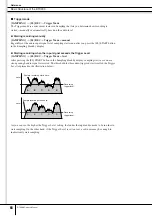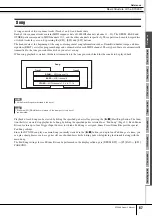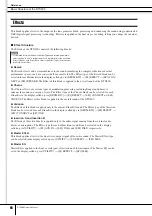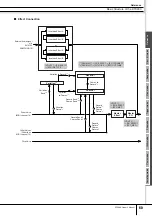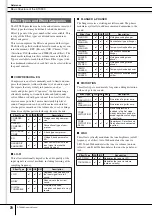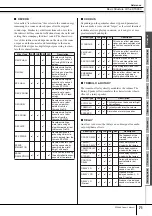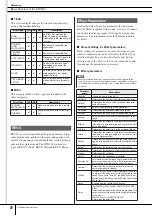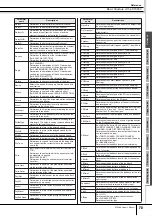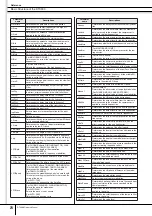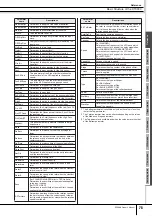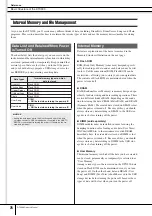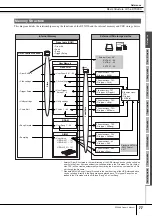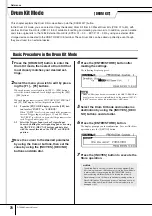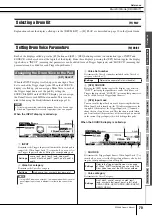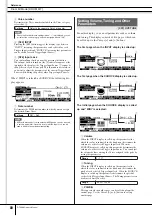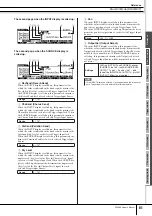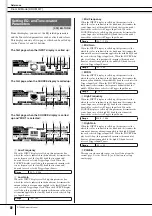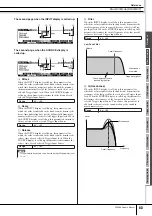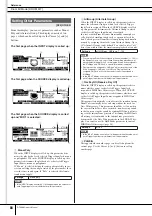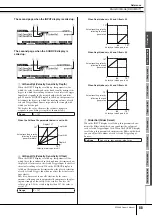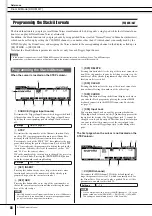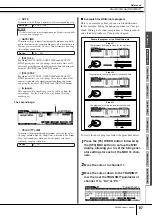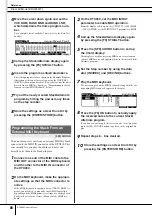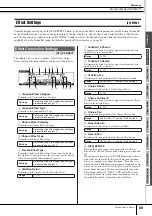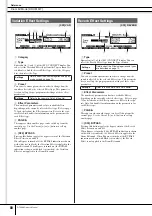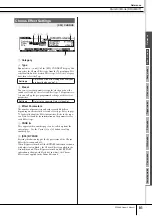
Basic Structure of the DTX900
Reference
76
DTX900 Owner’s Manual
Internal Memory and File Management
As you use the DTX900, you’ll create many different kinds of data, including Drum Kits, Drum Voices, Songs and Chain
programs. This section describes how to maintain the various types of data and use the memory devices/media for storing
them.
The chart below lists the data types you can create on the
instrument and the internal memory locations to which they
are stored, permanently or temporarily. Keep in mind that
certain types of data are lost when you turn off the power
and you should always prepare a USB storage device for
use BEFORE you start creating or editing data.
Below are explanations of the basic terms used in the
Memory Structure illustration on the next page.
●
Flash ROM
ROM (Read Only Memory) is memory designed specifi-
cally for reading out data, and as such data cannot be writ-
ten to it. Unlike conventional ROM, Flash ROM can be
overwritten – allowing you to store your own original data.
The contents of Flash ROM are maintained even when the
power is turned off.
●
DRAM
RAM (Random Access Memory) is memory designed spe-
cifically for data writing and data reading operations. There
are two different kinds of RAM, depending on the condi-
tion for storing the data: SRAM (Static RAM) and DRAM
(Dynamic RAM). The created data stored on DRAM is lost
when the power is turned off. Because of this, you should
always store any data residing in DRAM to the USB stor-
age device before turning off the power.
●
DIMM (sold separately)
DIMM modules must be installed in order for using the
Sampling function or for loading audio data (User Voice/
WAV file/AIFF file) to the instrument. As with DRAM
described above, the created data stored on DIMM is lost
when the power is turned off. Because of this, you should
always store any data residing in DIMM to the USB stor-
age device before turning off the power.
●
User Memory
The internal memory to which all the data you have created
can be stored, permanently or temporarily is referred to as
“User Memory.”
Among various types of data created on the DTX900, data
stored on Flash ROM can be maintained even if you turn
the power off. On the other hand, data on DRAM (User
Song) and DIMM (User Voice) should be saved to the USB
storage device before turning the power off because these
types of data will be lost when you turn the power off.
Data Lost and Retained When Power
is Turned Off
Data types
Internal memory types to which
data is stored
Drum Kit
Flash ROM
Click settings
Flash ROM
Trigger Setups
Flash ROM
Utility settings
Flash ROM
Chain
Flash ROM
User Song
DRAM
→
Will be lost when turning the power off!
User Voice
DIMM
→
Will be lost when turning the power off!
• Among the data types above, the User Song and User Voice data
should be saved to a USB storage device connected to the USB TO
DEVICE connector before turning the power off. Otherwise, the cre-
ated data will be lost.
NOTICE
Internal Memory

